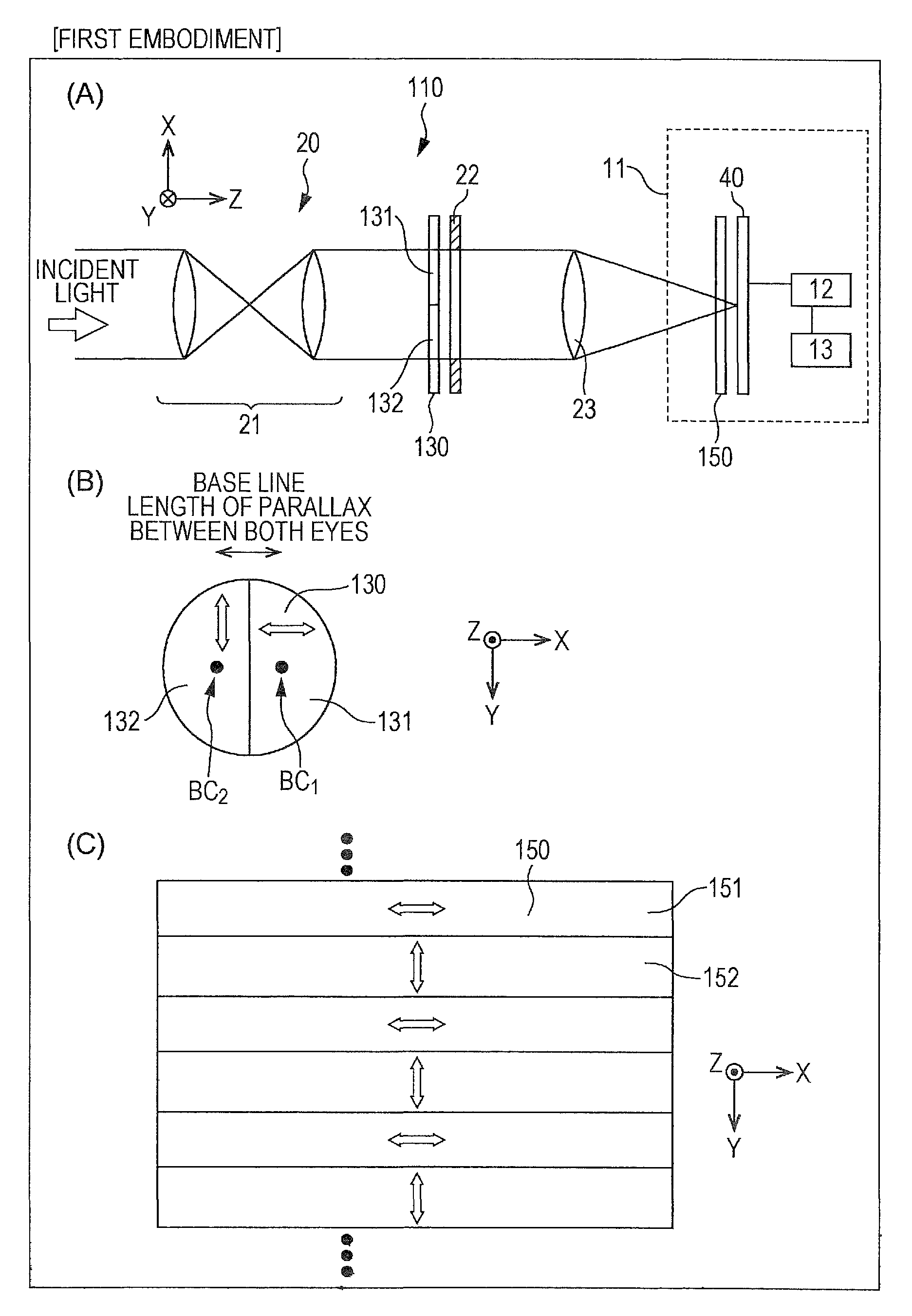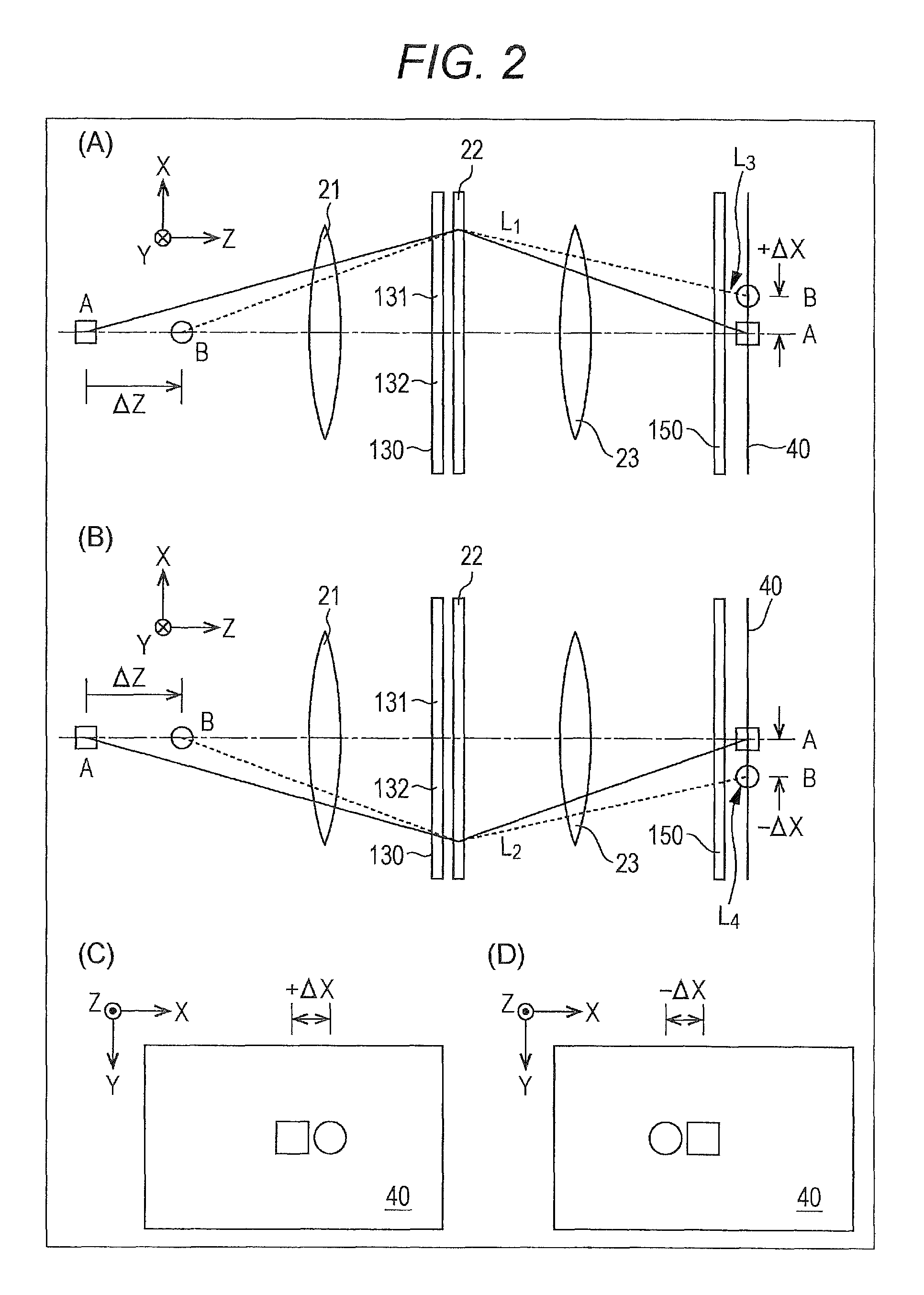Image-capturing apparatus and image-capturing method
a technology of image-capturing apparatus and image-capturing method, which is applied in the direction of instruments, optical elements, radio frequency control devices, etc., can solve the problems of increasing the size of the apparatus, not being practical, and being extremely difficult, and achieves simple configuration and structure, and easy incorporation
- Summary
- Abstract
- Description
- Claims
- Application Information
AI Technical Summary
Benefits of technology
Problems solved by technology
Method used
Image
Examples
first embodiment
[0064]The first embodiment relates to an image-capturing apparatus and an image-capturing, method according to a first aspect of this disclosure. More particularly, the first embodiment relates to an image-capturing apparatus and an image-capturing method for capturing a subject as a three-dimensional image.
[0065]A conceptual diagram illustrating an image-capturing apparatus according to the first embodiment is shown in FIG. 1(A). The states of polarization of first polarization means and second polarization means is schematically shown in FIGS. 1(B) and 1(C). A conceptual diagram illustrating light that passes a lens system, a first region of the first polarization means, and a third region of the second polarization means and reaches an image-capturing device array is shown in FIG. 2(A). A conceptual diagram illustrating light that passes a second region of the first polarization means and a fourth region of the second polarization means and reaches an image-capturing device array...
second embodiment
[0085]The second embodiment is a modification of the first embodiment. In the first embodiment, the direction of the electric field of the first region transmission light L1 is parallel to the first direction. In contrast, in the second embodiment, the direction of the electric field of the first region transmission light L1 is at 45 degrees to the direction of the first direction. The states of polarization of first polarization means 230 and second polarization means 250 provided in an image-capturing apparatus according to the second embodiment are schematically shown in FIGS. 6(A) and 6(B).
[0086]A conceptual diagram illustrating the image-capturing device array 40 having Bayer arrangement is shown in FIG. 7. In the second embodiment, an image-capturing device array 40 is configured such that one pixel includes four image-capturing devices (one red image-capturing device R receiving red color, one blue image-capturing device B receiving blue color, and two green image-capturing d...
third embodiment
[0088]The third embodiment is also a modification of the first embodiment. In an image-capturing apparatus according to the third embodiment, first polarization means 330 is configured such that a central region 333 is provided between a first region 331 and a second region 332, and the polarization state of the central region transmission light that has passed the central region 333 does not change from the polarization state of the light before incidence to the central region 333. That is, the central region 333 is a transparent state in respect to the polarization.
[0089]By the way, when the incident light passes the first polarization means, the amount of light decreases in proportional to the spectral characteristics and the extinction ratio, and the light becomes darker. In this case, the extinction ratio is a ratio between the amount of light selected by a polarizer and allowed to pass upon being and the amount of leaking light reflected or absorbed which is not selected by th...
PUM
 Login to View More
Login to View More Abstract
Description
Claims
Application Information
 Login to View More
Login to View More - R&D
- Intellectual Property
- Life Sciences
- Materials
- Tech Scout
- Unparalleled Data Quality
- Higher Quality Content
- 60% Fewer Hallucinations
Browse by: Latest US Patents, China's latest patents, Technical Efficacy Thesaurus, Application Domain, Technology Topic, Popular Technical Reports.
© 2025 PatSnap. All rights reserved.Legal|Privacy policy|Modern Slavery Act Transparency Statement|Sitemap|About US| Contact US: help@patsnap.com



